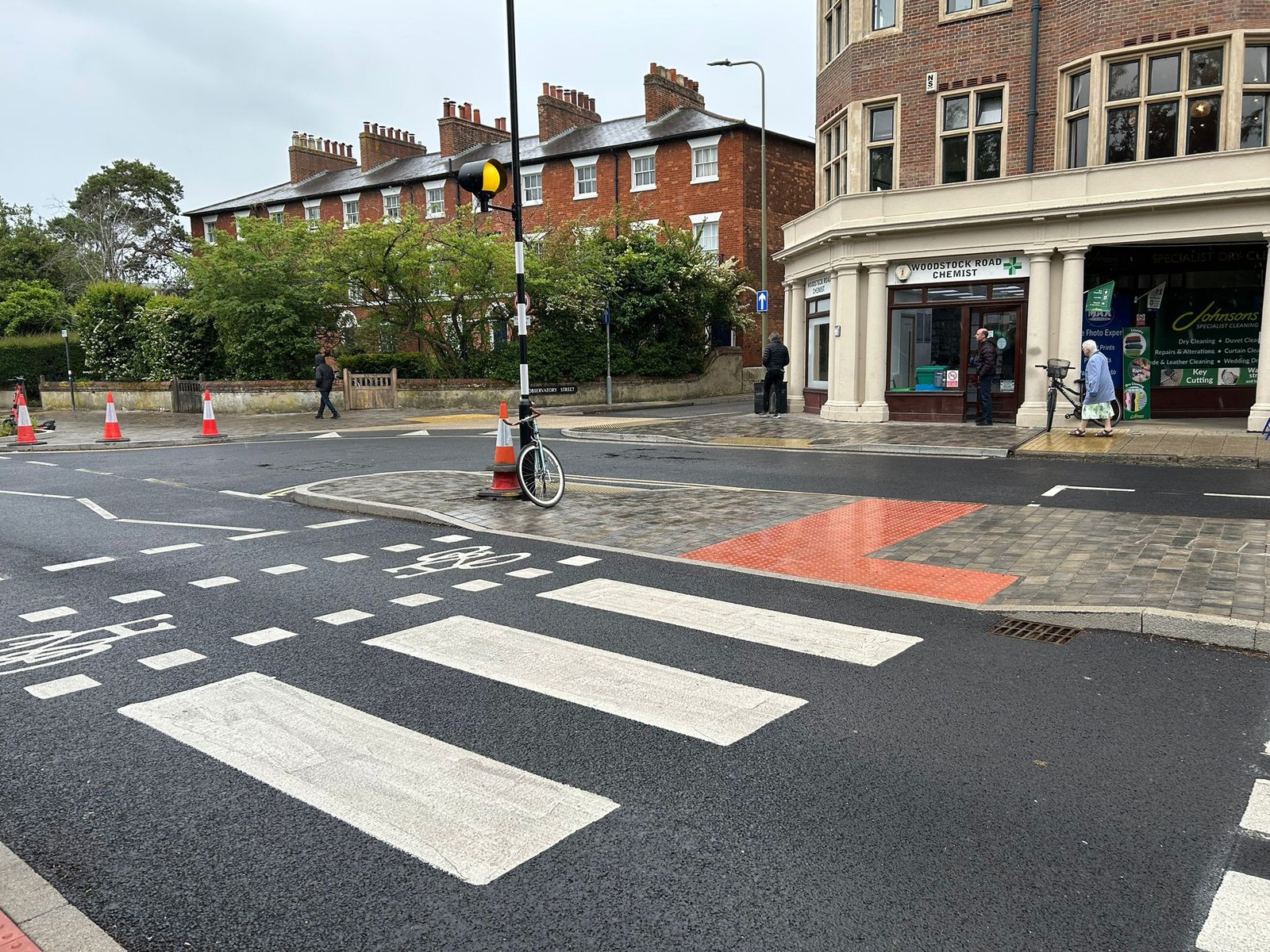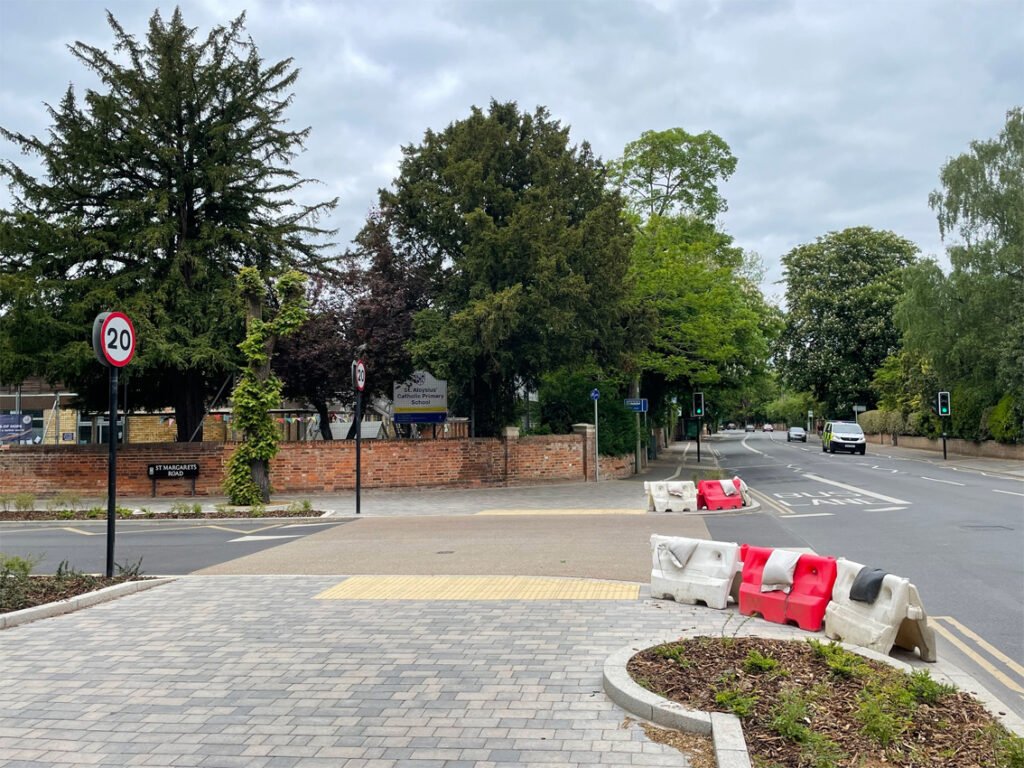Two cheers for the Woodstock Road improvements

By Ian Loader and Danny Yee
Ian is Chair of Cyclox and Danny is a sustainable transport activist
The County’s active travel improvement works on Woodstock Road are now complete.
- Eleven side road entries have been improved, slowing down motor traffic at junctions.
- More pleasant pedestrian space has been created.
- A much needed zebra-crossing has gone in by the shops at Bevington Road – though the parallel crossing for cyclists has no sensible connection at either end.
- A new stretch of ‘cycle path’ has been created – albeit by painting a line down the pavement.
- New lane markings at the intersection with St Giles make that busy junction safer for cyclists.
These are improvements – mainly for the benefit of pedestrians, but also for cyclists. Cyclox welcomes them.
Slowing down turning traffic
Slowing down motor traffic at side-road entries makes those junctions safer for pedestrians and cyclists. The road design at these junctions gives effect to the new Highway Code (2022), which makes it clear that turning traffic should cede to pedestrians. It sends a signal to drivers (and for that matter cyclists) that when turning into side streets, they are crossing pedestrian space – not the other way round. Over time, these improvements should happen to all side-road entries in the city – starting with worst cases of gaping, ‘car-brain’ design.
So its two cheers for the Woodstock Road.
Still a problem to be solved
Let us be clear, however. In active travel terms, these improvements have not fixed the Woodstock Road. It remains a problem to be solved. Woodstock Road is a barrier to safe and inclusive cycling in the city. It is an unhappy and confusing mix of cycle lanes on the pavement, bus lanes that switch sides, and a long stretch into town with no cycling provision at all. On one of the main arterial routes into Oxford, this is a disgrace. The photos below give examples of why we are giving this just two cheers.
It is also an active obstacle to the County Council meeting its targets to reduce car journeys, and serious injuries and fatalities, on our roads. In 2025, the Council is still painting white lines on the pavement and pictures of bikes on the road – provision that requires cyclists to either ‘pretend to be a pedestrian’ or ‘pretend to be a motor vehicle.’

The good
The junction with St Margaret’s Road. This crossing point used to be 17 metres across, its sweeping curves allowing vehicles to turn in at 30 mph. Now it is 6.5 metres and they have to slow to 10–15mph. Much safer for pedestrians, and people cycling north on Woodstock Road.
The bad
The new cycle ‘track’ between St Margaret’s Road and Frenchay Road. It goes up and down at every driveway, is obstructed by posts, bus shelters, pedestrians and lacks priority over side streets. It would be severely sub-standard as a one-way cycle track, but as a two-way track it is farcically bad.

Short sighted and short term
As the Oxford Clarion recently reported, a visionary – and costed – scheme to overhaul Woodstock Road exists – one that would transform this key route into and out of Oxford into a road that gives equal priority to all forms of mobility. That scheme urgently needs to be built. The tragedy is that, if and when it is built, the improvements that have just been installed will all have to be ripped out. It is a tragedy of short-term planning and of budgets for sustainable travel that continue to be piecemeal and inadequate to the challenge of building safe, clean and inclusive transport.
Photo credits
Zebra crossing: Ian Loader
St Margaret’s Road: Oxford Pedestrians Association
Cycle track: Danny Yee
